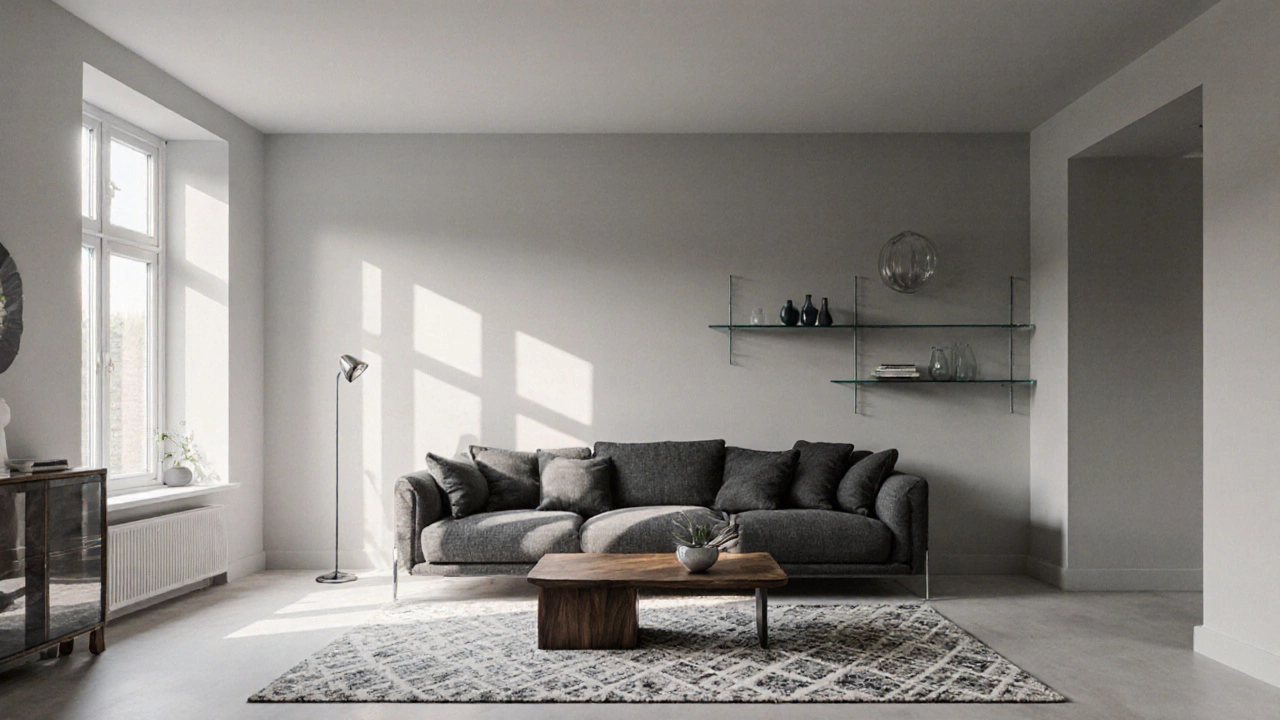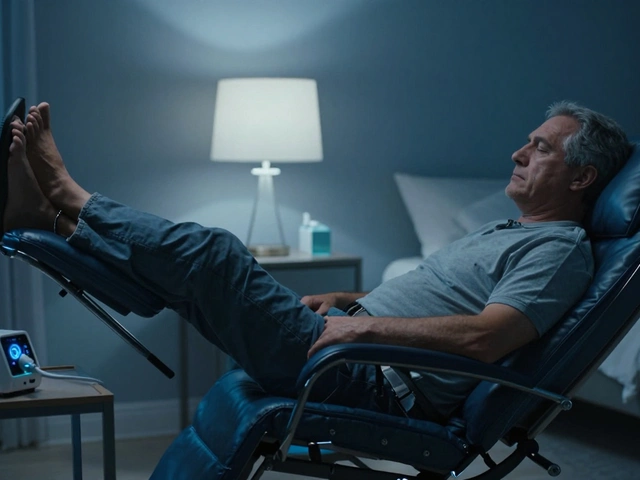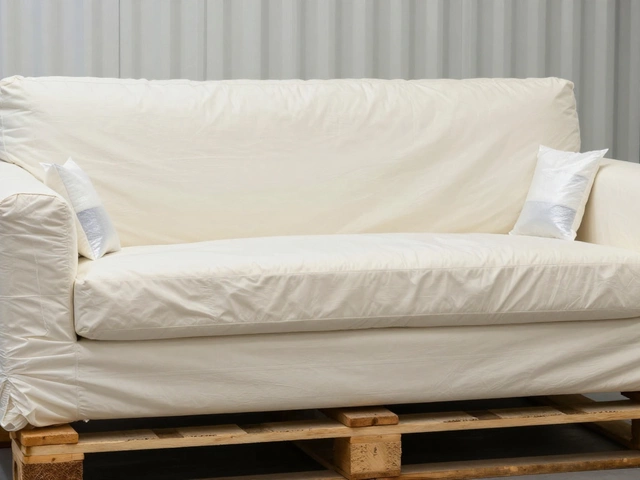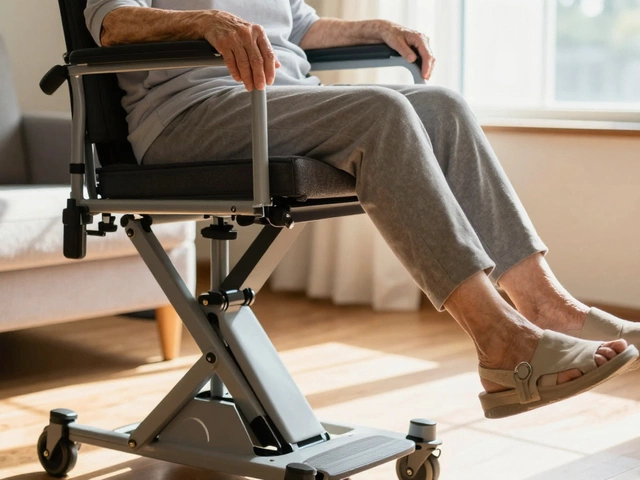Gray Space Expansion Calculator
Enter your room's lighting conditions and preferred undertone to find the best gray shade for expanding your space.
- • Light gray with L* >70 reflects more light
- • Warm undertones work best in sunny rooms
- • Cool undertones keep narrow spaces airy
Key Insight: Light gray paint with high reflectance (L* >70) visually expands spaces by reflecting more light, reducing visual weight of walls. Warm undertones add coziness in sunny rooms, while cool undertones keep narrow spaces airy.
Science Note: University of Texas research shows light gray walls can make rooms feel up to 15% larger than white walls due to subtle contrast that defines depth without overwhelming the eye.
Ever walked into a room painted a dull gray and felt like the walls were closing in? The truth is, not all grays are created equal-some can actually push the boundaries of a space and make it feel larger. Below you’ll learn which gray hues work best, why they matter, and how to pair them with sofa sets for a cohesive look.
Key Takeaways
- Light gray paint with high reflectance (L*>70) visually expands a room.
- Warm undertones add depth in sunny rooms; cool undertones keep narrow spaces airy.
- Match gray walls to sofa colors and finishes for a balanced, roomy feel.
- Test paint samples under your room’s natural and artificial lighting before committing.
- Avoid overly dark grays unless you accent a high‑ceiling or use strategic lighting.
How Color Shapes Space Perception
Psychology and physics both agree: lighter surfaces reflect more light, which tricks the eye into thinking a space is bigger. When a wall reflects light, it reduces the visual weight of the boundary, allowing the eye to travel farther. This effect is amplified by the undertone of the gray-warm undertones (like beige or pink) can add a sense of coziness in bright rooms, while cool undertones (blue or green) keep a room feeling open when natural light is limited.
In interior design research from the University of Texas study on color perception, participants reported that rooms painted with a light, neutral gray felt up to 15% larger than those with a comparable white wall, thanks to the subtle contrast that defines depth without overwhelming the eye.
Major Gray Families and Their Traits
Below are the four most common gray categories you’ll encounter at paint stores. Each description includes a microdata markup so search engines can instantly recognize the term.
Light Gray is a high‑L* shade (typically 70‑80) that reflects ample light, creating an airy backdrop. Its undertones are usually very subtle, leaning toward neutral.
Warm Gray carries hints of beige, yellow, or pink. While still mid‑range in L* (around 55‑65), the warm nuance makes it feel inviting, especially in rooms with plenty of daylight.
Cool Gray features blue, green, or violet undertones. Its cooler bias helps recede walls, making narrow corridors or low‑ceiling rooms appear taller.
Neutral Gray strives for balance, with almost no discernible warm or cool tint. It works well as a ‘canvas’ for bold furniture pieces but may lack the spatial‑enhancing qualities of the lighter variants.
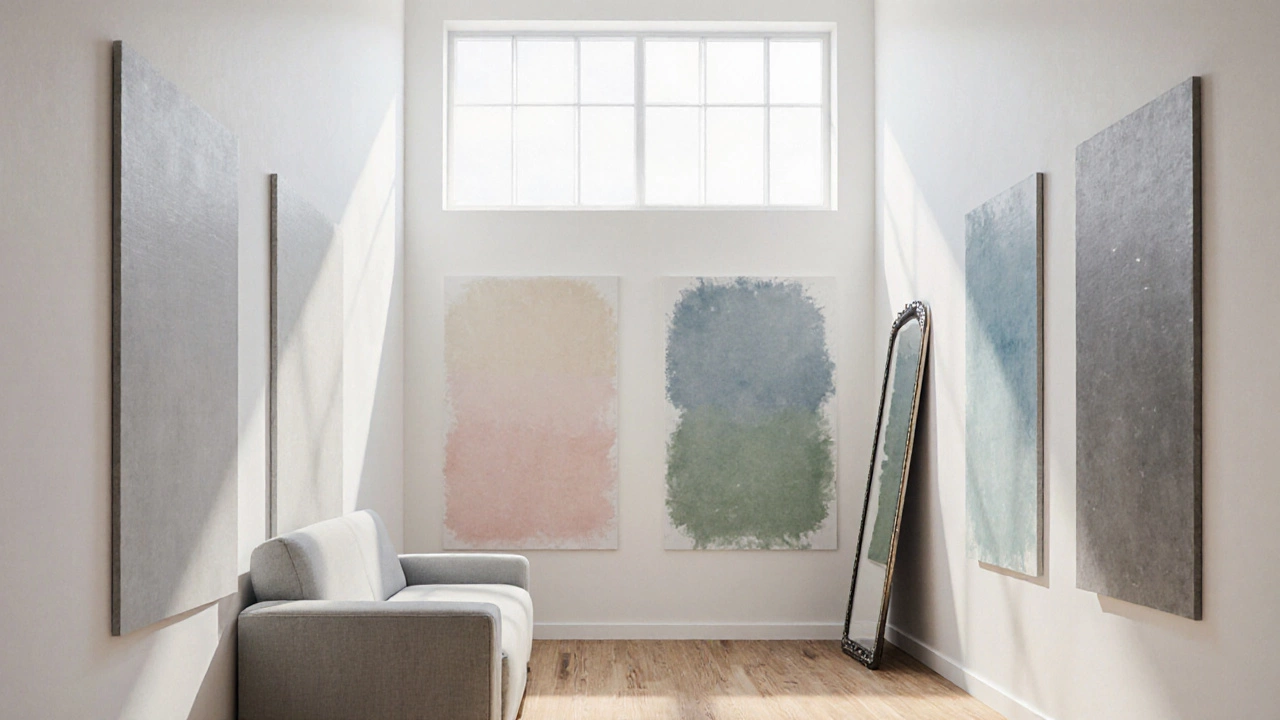
Choosing the Right Gray for a Bigger Look
Follow these three decision criteria:
- Light reflectance (L* value): Aim for 70or higher if you want maximum expansion. Paint suppliers often list the L* on the label; if not, request a sample.
- Room’s natural light: Sunny rooms (south‑facing windows) can handle a slightly richer warm gray; dimmer rooms benefit from a cool gray that adds a hint of brightness.
- Floor and furniture contrast: Light gray walls pair best with darker flooring (e.g., walnut) or medium‑tone sofa sets. The contrast creates depth without shrinking the perception of space.
Pairing Gray Walls with Sofa Sets
If you’re reading this, you probably already own-or plan to buy-a sofa set. The interaction between wall color and sofa hue is pivotal. Here’s how to strike the right balance:
- Light Gray walls + Light‑Neutral Sofa: Keeps the room open and cohesive. Add textured throw pillows in a slightly deeper gray for subtle contrast.
- Warm Gray walls + Cream or Taupe Sofa: The warm undertone echoes the sofa’s hue, creating a unified, spacious feel.
- Cool Gray walls + Charcoal or Navy Sofa: The cool side of the wall recedes, allowing the darker sofa to become a focal point without crowding the space.
- Neutral Gray walls + Pop‑Color Sofa (e.g., teal or mustard): The neutral backdrop lets the vibrant sofa shine, and the contrast can make the room feel larger due to visual separation.
Remember, the sofa set itself should be proportionate to the room. A massive sectional in a compact living area will dominate regardless of wall color, so think scale first, then color.
Practical Steps to Test Gray Shades
Before you paint an entire wall, try these low‑commitment methods:
- Sample swatches: Paint 12×12inches patches on each wall at eye level. Observe them at different times of day.
- White‑to‑gray transition: Start with a very light gray and gradually add a darker tone. This helps you see the exact point where the wall stops expanding the room.
- Use large cardboard: Hang a full‑size piece of cardboard painted in the chosen shade. It mimics the effect of a full wall without the mess.
- Lighting check: Turn on ceiling lights, floor lamps, and any accent lighting. A gray that looks great under daylight might turn muddy under warm LED bulbs.
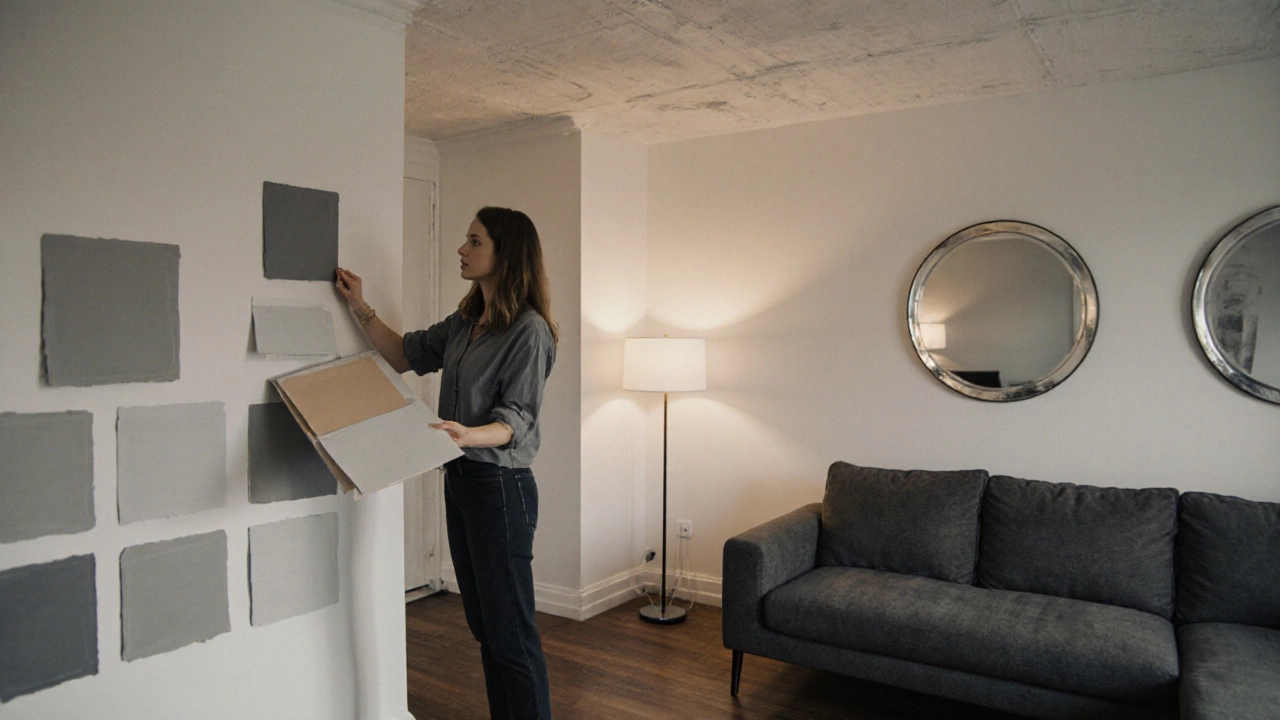
Common Pitfalls & Pro Tips
Pitfall 1 - Going too dark: Dark grays (L*<40) absorb light and make rooms feel smaller. Reserve them for accent walls or rooms with tall ceilings.
Pitfall 2 - Ignoring undertones: A warm gray in a north‑facing room can look drab. Match undertone to your predominant light source.
Pro Tip - Add reflective décor: Mirrors, glass coffee tables, or glossy trims bounce light across gray walls, reinforcing the spacious effect.
Pro Tip - Use ceiling paint: A very light gray on the ceiling (e.g., L*≈90) creates a seamless vertical flow that lifts the eye, further enlarging the perception of height.
Gray Shade Comparison Table
| Shade | L* Value (Lightness) | Typical Undertone | Best Room Conditions | Ideal Sofa Pairing |
|---|---|---|---|---|
| Light Gray | 75‑85 | Neutral | Any lighting, especially low‑light rooms | Medium‑tone or darker sofa for contrast |
| Warm Gray | 60‑70 | Beige / Pink | South‑facing rooms with ample daylight | Cream, taupe, or warm‑wood sofa |
| Cool Gray | 55‑65 | Blue / Green | North‑facing or artificially lit spaces | Charcoal, navy, or cool‑tone fabric sofa |
| Neutral Gray | 65‑75 | Balanced | Versatile, but needs strong contrast décor | Bold‑color sofa or patterned upholstery |
Frequently Asked Questions
Does a gray ceiling help a room feel larger?
Yes. A light‑reflecting gray ceiling (L*≈90) reduces the visual break between walls and ceiling, making the vertical space appear taller and the whole room more open.
Can I use the same gray shade in a bathroom and a living room?
It works if the bathroom gets plenty of natural light. Otherwise, choose a cooler, lighter gray to avoid a cramped feel caused by moisture‑induced dimness.
Should I paint all walls the same gray or create an accent wall?
A uniform light gray maximizes the expanding effect. If you like visual interest, use a slightly darker gray on one wall as an accent; just keep the main walls light.
How does flooring color affect the gray wall’s ability to enlarge a room?
Darker flooring creates contrast, pushing the walls outward visually. Light hardwood can blend with gray walls and reduce the perception of depth, so pair light gray walls with medium to dark flooring for the best expansion.
Is matte or satin finish better for making a room feel bigger?
Matte finishes scatter light evenly, which helps diffuse shadows and keep walls looking distant. Satin adds a subtle sheen that can reflect more light but may also highlight imperfections.
By understanding how lightness, undertone, and surrounding elements interact, you can pick a gray that does more than just hide walls-it actually opens up the space. Experiment, observe, and enjoy the newfound roominess.

